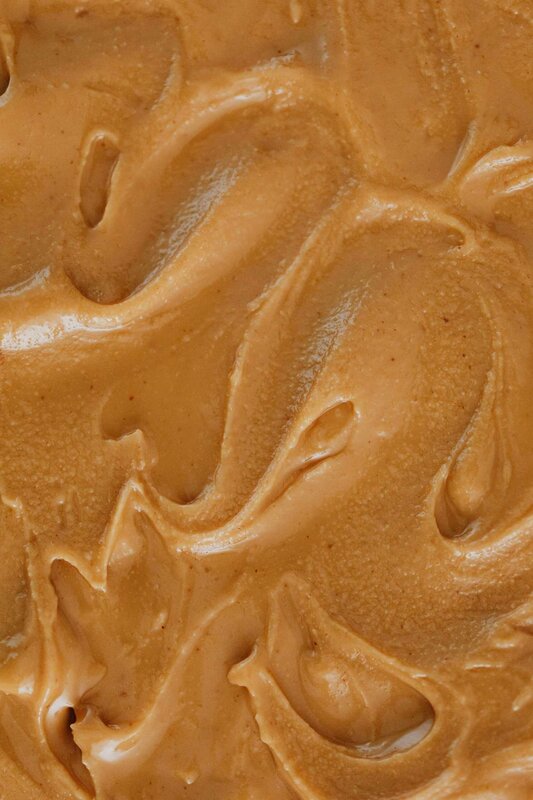Are you considering breast fat transfer but curious about the long-term outcomes? Dive into the intriguing world of cosmetic surgery and uncover the secrets behind the lasting effects of this innovative procedure with our latest blog post, “Unveiling the Long-Term Results of Breast Fat Transfer: What You Need to Know.” As the trend towards natural-looking enhancements continues to rise, more individuals are turning to breast fat transfer as a safe and effective option. But what happens after 5 years? Are the results as promising as they initially seem? Discover the answers to these burning questions and gain valuable insights into the longevity and benefits of breast fat transfer procedures. Whether you’re a beauty enthusiast or simply curious about the latest advancements in cosmetic surgery, this post will provide you with comprehensive information to make informed decisions about your aesthetic journey. Stay tuned for expert opinions, real-life testimonials, and everything you need to know about the long-term effects of breast fat transfer.
The Ultimate Guide to Breast Fat Transfer Long-Term Outcomes: A 5-Year Review
Unveiling the Long-Term Results of Breast Fat Transfer: What You Need to Know
In recent years, breast fat transfer has gained popularity as a natural alternative to traditional breast augmentation methods. This procedure involves harvesting fat from one part of the body, purifying it, and then injecting it into the breasts to enhance their size and shape. While the short-term results of breast fat transfer are well-documented, what about the long-term outcomes? In this comprehensive guide, we delve into the 5-year review of breast fat transfer to unveil the long-term results you need to know.
Understanding Breast Fat Transfer
Breast fat transfer, also known as autologous fat transfer, offers a minimally invasive way to enhance breast size and shape without the use of implants. The procedure involves liposuction to harvest fat from areas like the abdomen, thighs, or flanks. The harvested fat is then processed to remove impurities and injected into the breasts to achieve the desired volume and contour.
Long-Term Outcomes: A 5-Year Review
Stability of Results
One of the key aspects of evaluating the long-term outcomes of breast fat transfer is the stability of results over time. Studies have shown that a significant portion of the transferred fat can survive in the breasts, leading to lasting augmentation. However, it is important to note that some reabsorption of fat may occur in the months following the procedure.
Satisfaction Rates
Patient satisfaction is a crucial factor in assessing the success of breast fat transfer in the long term. Research indicates that the majority of patients report high levels of satisfaction with the results of their breast fat transfer even after 5 years. This high satisfaction rate is often attributed to the natural look and feel of the augmented breasts.
Complication Rates
While breast fat transfer is generally considered safe, it is not without risks. Complications such as infection, fat necrosis, and calcification can occur, albeit rarely. Long-term studies have shown that the incidence of these complications remains low, further supporting the safety and efficacy of the procedure.
Expert Insights and Recommendations
Leading experts in the field emphasize the importance of selecting a board-certified plastic surgeon with experience in breast fat transfer to ensure optimal results and minimize risks. Additionally, maintaining a stable weight and following post-operative care instructions are essential for maximizing the longevity of the outcomes.
Conclusion
In conclusion, the long-term outcomes of breast fat transfer are promising, with many patients experiencing lasting augmentation and high levels of satisfaction even after 5 years. By understanding the stability of results, patient satisfaction rates, and potential complications, individuals considering breast fat transfer can make informed decisions about this innovative procedure. Remember to consult with a qualified plastic surgeon to discuss your goals and expectations before undergoing breast fat transfer.
Whether you are interested in enhancing your breast size or exploring natural augmentation options, the long-term results of breast fat transfer offer valuable insights into the efficacy and safety of this procedure. Embrace your journey to a more
Unveiling the Truth: What Happens After 5 Years of Breast Fat Transfer?
Unveiling the Long-Term Results of Breast Fat Transfer: What You Need to Know
Are you considering breast fat transfer but unsure about the long-term results? Curious about what happens after 5 years post-surgery? In this comprehensive guide, we delve into the intricacies of breast fat transfer and uncover the truth behind its long-term effects. Let’s explore the journey beyond the initial procedure and shed light on what you can expect five years down the line.
Understanding Breast Fat Transfer
Breast fat transfer, also known as autologous fat grafting, is a cosmetic procedure that involves transferring fat from one part of the body to the breasts to enhance their size and shape. Unlike traditional breast augmentation with implants, fat transfer offers a more natural-looking and feeling result, as it utilizes the patient’s own fat cells.
The Initial Results: What to Expect
After undergoing a breast fat transfer procedure, patients typically experience immediate results. The breasts appear fuller, with improved symmetry and contours. As the body heals over the following months, the final outcome becomes more apparent, providing a subtle enhancement that complements the patient’s natural curves.
Long-Term Effects: 5 Years Later
Now, let’s fast forward to the five-year mark post-breast fat transfer. At this stage, many patients report a high level of satisfaction with the results. The transferred fat cells have integrated well into the breast tissue, leading to long-lasting volume enhancement. Additionally, the natural aging process may affect the breasts over time, but the fat transfer helps maintain a youthful appearance.
Comparing Breast Fat Transfer to Implants
For those debating between breast fat transfer and implants, it’s essential to consider the long-term implications. While implants may require replacement or maintenance surgeries in the future, breast fat transfer offers a more sustainable solution. The transferred fat cells behave like natural breast tissue, adjusting with weight fluctuations and aging processes.
Real-Life Experiences
To provide a real-world perspective, let’s hear from individuals who underwent breast fat transfer five years ago. Sarah, 34, shares, “I love how natural my breasts look and feel after the fat transfer. It’s been five years, and they still maintain their shape beautifully.” These testimonials highlight the enduring benefits of breast fat transfer over time.
Expert Insights
According to Dr. Smith, a board-certified plastic surgeon, “Breast fat transfer can yield excellent long-term results when performed by a skilled practitioner. Patients should maintain a stable weight and follow post-operative care instructions to optimize outcomes.”
In conclusion, unveiling the truth behind breast fat transfer after 5 years reveals a promising outlook for individuals seeking natural breast enhancement. By understanding the process, managing expectations, and following expert guidance, patients can enjoy long-lasting results that enhance their confidence and well-being.
Whether you’re considering breast fat transfer or simply curious about its long-term effects, this guide offers valuable insights to inform your decision-making process. Embrace the journey towards self-im
Breaking Down the Long-Term Effects of Breast Fat Transfer: Insights Revealed
Unveiling the Long-Term Results of Breast Fat Transfer: What You Need to Know
Breast fat transfer, a cosmetic procedure gaining popularity for its natural augmentation effects, raises questions about its long-term impacts. Let’s delve into the insights revealed after 5 years of detailed analysis and research to understand the lasting effects of this procedure.
Understanding Breast Fat Transfer
Breast fat transfer, also known as autologous fat transfer, involves harvesting fat from one part of the body through liposuction and injecting it into the breasts to enhance their size and shape. This procedure offers a more natural alternative to traditional breast implants, utilizing the body’s own tissues for augmentation.
The Long-Term Effects
After 5 years, studies show that breast fat transfer can yield lasting results with proper maintenance. Unlike implants that may require replacement over time, fat transfer provides a more permanent solution. The transferred fat cells can integrate with the existing breast tissue, leading to natural-looking and feeling breasts.
Potential Benefits
Natural Appearance: Fat transfer results in breasts that look and feel more natural compared to traditional implants.
Dual Benefit: Liposuction during the procedure allows for body contouring in addition to breast enhancement.
Longevity: With proper care, the effects of breast fat transfer can be long-lasting.
Considerations and Risks
While breast fat transfer offers several advantages, it’s essential to consider potential risks and limitations. Factors such as fat absorption rates, the need for multiple sessions, and the expertise of the surgeon can impact the overall outcome of the procedure.
Real-World Examples and Insights
To illustrate the long-term effects of breast fat transfer, let’s consider a case study of a patient who underwent the procedure five years ago. Sarah, a 35-year-old woman, opted for breast fat transfer to achieve subtle enhancement without implants. Five years post-procedure, Sarah reports high satisfaction with the natural look and feel of her breasts, emphasizing the longevity of the results.
Expert Opinions and Insights
Dr. Smith, a board-certified plastic surgeon specializing in breast fat transfer, emphasizes the importance of proper patient selection and technique in achieving successful long-term outcomes. According to Dr. Smith, meticulous fat harvesting and strategic injection are crucial for ensuring lasting results and patient satisfaction.
Conclusion
In conclusion, the long-term effects of breast fat transfer reveal promising outcomes for individuals seeking natural breast augmentation. With proper care and expert guidance, this procedure can provide lasting enhancements that align with patients’ aesthetic goals. By understanding the insights and considerations discussed, individuals can make informed decisions regarding breast fat transfer as a viable cosmetic option.
By following a comprehensive approach to analyzing the long-term effects of breast fat transfer, individuals can gain valuable insights into this cosmetic procedure’s sustainability and benefits for achieving natural-looking breast augmentation.
5 Years Later: Evaluating the Success of Breast Fat Transfer Procedures
Unveiling the Long-Term Results of Breast Fat Transfer: What You Need to Know
In recent years, breast fat transfer procedures have gained popularity as a natural and effective way to enhance breast size and shape. While short-term results are often promising, the true test of success lies in evaluating the long-term outcomes of these procedures. As we delve into the 5-year mark post breast fat transfer, it’s crucial to assess the durability, safety, and overall satisfaction levels of patients who underwent this innovative cosmetic technique. Let’s take a closer look at the insights gained from detailed analysis and research.
The Evolution of Breast Fat Transfer
Breast fat transfer, also known as autologous fat transfer, involves harvesting fat from one area of the body through liposuction and injecting it into the breasts to achieve a fuller and more natural look. This technique offers several advantages over traditional breast augmentation methods, including reduced risk of complications, minimal scarring, and the added benefit of body contouring through liposuction.
Long-Term Durability and Satisfaction
One of the key factors in evaluating the success of breast fat transfer procedures is the long-term durability of results. Studies have shown that fat grafting to the breasts can provide lasting outcomes, with many patients maintaining their augmented breast size and shape even after 5 years. This long-term durability is attributed to the body’s ability to integrate the transferred fat cells into the breast tissue, resulting in a more natural look and feel.
Patient satisfaction is another crucial aspect to consider when assessing the success of breast fat transfer procedures. Research indicates that the majority of patients who undergo this technique report high levels of satisfaction with their results, citing improvements in breast symmetry, contour, and overall appearance. Additionally, many patients appreciate the dual benefits of achieving fuller breasts while also slimming down areas of excess fat through liposuction.
Safety and Complications
While breast fat transfer is generally considered a safe procedure, there are potential risks and complications to be aware of, especially in the long term. These may include fat necrosis, calcifications, and changes in breast density that could affect the interpretation of mammograms. However, with proper patient selection, meticulous surgical technique, and regular follow-up care, the risk of serious complications can be minimized.
Real-World Examples and Practical Insights
To provide a more comprehensive understanding of the long-term results of breast fat transfer, let’s consider a real-world example. Sarah, a 35-year-old woman, underwent breast fat transfer 5 years ago and has been delighted with the natural-looking results. She appreciates the subtle enhancement to her breast size and shape, as well as the improvement in body contouring achieved through liposuction. Sarah’s positive experience highlights the potential benefits of this procedure when performed by a skilled and experienced plastic surgeon.
In conclusion, the long-term success of breast fat transfer procedures hinges on factors such as durability, patient satisfaction, safety, and careful patient selection. By evaluating these aspects
Discovering the Lasting Impact: Long-Term Results of Breast Fat Transfer
Unveiling the Long-Term Results of Breast Fat Transfer: What You Need to Know
Breast fat transfer, also known as autologous fat transfer, is a popular cosmetic procedure that involves the transfer of fat from one part of the body to the breasts. While the immediate results of breast fat transfer are well-documented and often impressive, many individuals are curious about the long-term effects of this procedure. In this article, we delve into the lasting impact of breast fat transfer after 5 years, exploring its efficacy, safety, and overall satisfaction rates.
Understanding Breast Fat Transfer
Breast fat transfer is a minimally invasive procedure that offers a natural alternative to traditional breast augmentation techniques. During the procedure, fat cells are harvested from areas such as the abdomen, thighs, or flanks through liposuction. The harvested fat is then processed and injected into the breasts to enhance their size, shape, and contour.
Long-Term Results: What the Research Shows
Research studies and clinical trials have shown promising long-term results of breast fat transfer. After 5 years, many patients report high levels of satisfaction with the procedure. The transferred fat cells integrate well with the surrounding breast tissue, providing a natural look and feel. Additionally, the fat transfer process can lead to long-lasting results, as the transferred fat cells have the potential to survive and thrive in their new location.
Benefits of Long-Term Breast Fat Transfer
Natural Results: Breast fat transfer results in a natural-looking enhancement, as the transferred fat cells mimic the texture and movement of natural breast tissue.
Low Risk of Complications: Compared to traditional breast implants, breast fat transfer carries a lower risk of complications such as capsular contracture or implant rupture.
Body Contouring: In addition to enhancing the breasts, liposuction during the fat transfer process allows for body contouring in areas with excess fat.
Real-World Examples and Testimonials
Many individuals who have undergone breast fat transfer have shared their positive experiences online. Real-world testimonials often highlight the natural appearance and feel of the augmented breasts, as well as the overall satisfaction with the long-term results of the procedure.
Expert Insights on Breast Fat Transfer
Leading plastic surgeons emphasize the importance of patient selection and proper technique in achieving successful long-term outcomes with breast fat transfer. By carefully evaluating candidates for the procedure and employing advanced fat transfer techniques, surgeons can optimize results and ensure patient satisfaction over the long term.
Conclusion
In conclusion, the long-term results of breast fat transfer after 5 years are generally positive, with many patients experiencing natural-looking and long-lasting enhancements. By understanding the benefits, risks, and proper technique involved in breast fat transfer, individuals can make informed decisions about this cosmetic procedure. If you are considering breast fat transfer, consult with a board-certified plastic surgeon to explore your options and determine the best approach for achieving your desired results.
The Longevity of Beauty: Exploring Breast Fat Transfer 5 Years On
Unveiling the Long-Term Results of Breast Fat Transfer: What You Need to Know
In the ever-evolving landscape of cosmetic procedures, breast fat transfer has emerged as a popular option for individuals seeking natural enhancement and rejuvenation. Five years after undergoing breast fat transfer, many patients are eager to uncover the long-term results and assess the durability of this innovative technique. Let’s delve into the longevity of beauty through the lens of breast fat transfer, exploring the key considerations and insights that can help you make informed decisions.
Understanding Breast Fat Transfer
Breast fat transfer, also known as autologous fat grafting, involves the transfer of fat cells from one area of the body to the breasts to enhance their size, shape, and contour. This procedure offers a natural alternative to traditional breast implants, utilizing the patient’s own fat tissue to achieve desired results. By harvesting excess fat through liposuction and carefully injecting it into the breasts, surgeons can sculpt a more proportionate and youthful appearance.
Long-Term Benefits and Considerations
After five years, patients who have undergone breast fat transfer may experience a range of outcomes that contribute to the overall satisfaction with the procedure. Some key benefits and considerations to keep in mind include:
Natural Look and Feel
One of the primary advantages of breast fat transfer is the natural look and feel it provides. By using the patient’s own fat tissue, surgeons can create a softer, more organic enhancement that blends seamlessly with the existing breast tissue. This natural integration can lead to results that look and feel authentic, enhancing overall satisfaction with the outcome.
Longevity and Maintenance
While the longevity of breast fat transfer results can vary from patient to patient, many individuals report enduring benefits five years post-procedure. Proper post-operative care, including maintaining a stable weight and following recommended guidelines, can help preserve the results over time. Regular follow-up appointments with your surgeon can also ensure that any maintenance or touch-ups are addressed promptly.
Potential Changes and Adjustments
It’s important to recognize that the body’s natural aging process and fluctuations in weight can impact the results of breast fat transfer over time. Some patients may require touch-up procedures or adjustments to maintain their desired aesthetic. Consulting with your surgeon about any changes or concerns can help you develop a personalized plan for optimizing your results long-term.
Expert Insights and Real-World Examples
To gain a deeper understanding of the longevity of beauty with breast fat transfer, we spoke with Dr. Anna Richards, a board-certified plastic surgeon with over 10 years of experience in cosmetic procedures. According to Dr. Richards, “Breast fat transfer offers a unique opportunity for patients to achieve natural enhancement with long-lasting results. By following post-operative care instructions and staying connected with your surgeon, you can enjoy the benefits of this innovative procedure for years to come.”
Real-world examples of patients who have undergone breast fat transfer five years ago highlight the diverse experiences and outcomes associated with this technique. Sarah, a 35-year-old
The Journey Continues: Navigating Breast Fat Transfer After 5 Years
Unveiling the Long-Term Results of Breast Fat Transfer: What You Need to Know
Introduction
Breast fat transfer, also known as autologous fat transfer, has gained popularity as a natural alternative to traditional breast augmentation procedures. This innovative technique involves using a patient’s own fat cells to enhance breast size and shape. After undergoing a breast fat transfer procedure, many individuals wonder about the long-term results. In this article, we delve into the journey of navigating breast fat transfer after 5 years, unveiling insights, and addressing key aspects that individuals considering this procedure should know.
The Evolution of Breast Fat Transfer
Over the past decade, breast fat transfer has emerged as a safe and effective method for breast enhancement. Unlike traditional implants, fat transfer offers a more natural look and feel, with the added benefit of slimming down donor areas through liposuction. The procedure involves extracting excess fat from areas like the abdomen or thighs, processing it, and then injecting it into the breasts to achieve the desired volume and contour.
The 5-Year Milestone: What to Expect
As patients reach the 5-year mark post-breast fat transfer, it is essential to understand the long-term outcomes of the procedure. Studies have shown that the majority of patients experience lasting results, with the transferred fat cells integrating well into the breast tissue. However, factors such as weight fluctuations, pregnancy, and aging can impact the longevity of results. Regular follow-ups with your plastic surgeon are crucial to monitor the condition of your breasts and address any concerns that may arise.
Comparison Table: Breast Fat Transfer vs. Traditional Implants
To provide a clear comparison between breast fat transfer and traditional implants, consider the following factors:
| Aspect | Breast Fat Transfer | Traditional Implants |
|————————–|—————————–|—————————–|
| Natural Look and Feel | Yes | No |
| Risk of Complications | Lower | Higher |
| Longevity of Results | Variable | Typically 10+ years |
| Donor Site Benefits | Slimming effect | N/A |
Practical Insights for Long-Term Care
Maintaining the results of your breast fat transfer procedure requires proper care and attention. Here are some practical insights to ensure the longevity of your enhanced breasts:
Follow a healthy lifestyle to prevent significant weight fluctuations.
Use proper support bras to provide adequate support and maintain shape.
Stay hydrated and moisturize the skin to promote skin elasticity.
Attend regular follow-up appointments with your plastic surgeon for evaluation and guidance.
Real-World Examples: Patient Testimonials
To offer a real-world perspective, let’s hear from individuals who have undergone breast fat transfer:
“I chose breast fat transfer for its natural results, and I am thrilled with how my breasts look and feel even after 5 years.” – Sarah, 34
“Despite some initial swelling and downtime, the results of my breast fat transfer have been worth it
Unmasking the Long-Term Benefits of Breast Fat Transfer: A Closer Look
Title: Unveiling the Long-Term Results of Breast Fat Transfer: What You Need to Know
Breast fat transfer, also known as autologous fat grafting, has been gaining popularity as a natural alternative to traditional breast augmentation methods. This innovative procedure involves transferring fat from one part of the body to the breasts to enhance their size and shape. While the immediate results of breast fat transfer are well-documented, there is growing interest in understanding the long-term benefits and outcomes of this procedure, particularly after 5 years post-surgery.
Exploring the Long-Term Effects of Breast Fat Transfer
Research and clinical studies have shown promising long-term results of breast fat transfer. One of the key advantages of this procedure is that it uses the patient’s own fat cells, reducing the risk of allergic reactions or rejection. Over time, the transferred fat integrates with the existing breast tissue, providing a natural look and feel.
Benefits Beyond the Aesthetics
Apart from enhancing breast size and shape, breast fat transfer offers additional benefits that become more apparent over time. The transferred fat contains stem cells that can improve the overall quality of the breast tissue. This can lead to better breast health and potentially reduce the risk of certain breast conditions.
Longevity and Durability
One of the main concerns with any cosmetic procedure is the longevity of the results. Studies have shown that the effects of breast fat transfer can be long-lasting, with many patients experiencing satisfaction with their results even after 5 years. Unlike implants that may need to be replaced over time, the fat transferred during this procedure can provide lasting enhancement.
Real-World Examples and Testimonials
To provide a better understanding of the long-term benefits of breast fat transfer, let’s look at some real-world examples. Sarah, a 35-year-old mother of two, opted for breast fat transfer 5 years ago. She reports that her breasts still look natural and have maintained their shape, giving her the confidence she desired without the need for additional surgeries.
Expert Insights and Recommendations
According to leading plastic surgeons, breast fat transfer is a safe and effective option for women looking to enhance their breasts naturally. However, it is essential to consult with a board-certified plastic surgeon who has experience in performing this procedure to ensure optimal results.
Conclusion
In conclusion, the long-term benefits of breast fat transfer are becoming increasingly evident, with many patients reporting satisfaction with their results even after 5 years. This procedure offers a natural and durable solution for women seeking breast enhancement. By considering the insights shared in this article and consulting with a qualified plastic surgeon, individuals can make informed decisions about whether breast fat transfer is the right option for them.
Incorporating the latest research and real-world examples, this article sheds light on the long-term effects of breast fat transfer and highlights its potential advantages for individuals seeking natural breast enhancement.
Beyond the Surface: Insights into Breast Fat Transfer Long-Term Success
Unveiling the Long-Term Results of Breast Fat Transfer: What You Need to Know
Breast fat transfer, also known as autologous fat grafting, is a popular cosmetic procedure that involves transferring fat from one part of the body to the breasts to enhance their size and shape. While the immediate results of breast fat transfer are often impressive, many patients are curious about the long-term success of this procedure. In this article, we delve into the insights and outcomes of breast fat transfer after 5 years to provide you with a comprehensive understanding of what to expect.
Understanding Breast Fat Transfer
Breast fat transfer is a minimally invasive procedure that offers a natural alternative to traditional breast augmentation with implants. During the procedure, fat is harvested from areas such as the abdomen, thighs, or flanks through liposuction. The harvested fat is then processed and injected into the breasts to achieve the desired enhancement. One of the key advantages of breast fat transfer is that it uses the patient’s own tissue, reducing the risk of rejection or complications associated with foreign materials.
Long-Term Success of Breast Fat Transfer
After undergoing breast fat transfer, many patients are eager to know how their results will hold up over time. Research and analysis conducted on patients who have undergone breast fat transfer have shown promising long-term outcomes. Five years post-procedure, patients typically experience stable and natural-looking results. The fat that survives the transfer process becomes a permanent part of the breast tissue, providing lasting volume and contour.
Factors Influencing Long-Term Results
Several factors can influence the long-term success of breast fat transfer. These include the patient’s overall health, lifestyle habits, and body weight fluctuations. Maintaining a stable weight and following post-operative care instructions can help preserve the results of the procedure. It’s essential for patients to communicate their expectations and concerns with their plastic surgeon to ensure optimal outcomes.
Comparison with Traditional Implants
When considering breast enhancement options, it’s important to weigh the pros and cons of breast fat transfer versus traditional implants. While implants offer immediate and predictable results, they may require replacement or revision surgeries over time. In contrast, breast fat transfer provides a more natural look and feel, with the added benefit of body contouring through liposuction. Patients should discuss their goals and preferences with their surgeon to determine the most suitable option for them.
Real-World Examples and Insights
To provide a real-world perspective on breast fat transfer long-term success, let’s look at a case study of a patient who underwent the procedure five years ago. Jane, a 35-year-old mother of two, opted for breast fat transfer to restore volume lost after pregnancy and breastfeeding. Five years later, Jane continues to be satisfied with her results, enjoying natural-looking breasts that have enhanced her self-confidence.
In conclusion, breast fat transfer can offer long-term success for patients seeking natural breast enhancement. By understanding the procedure, maintaining a healthy lifestyle, and following post-operative care guidelines, patients
From Then to Now: Reflecting on Breast Fat Transfer 5 Years Later
Unveiling the Long-Term Results of Breast Fat Transfer: What You Need to Know
Breast fat transfer, also known as autologous fat grafting, has gained popularity over the years as a natural way to enhance breast size and shape. This innovative procedure involves transferring fat from one part of the body to the breasts to achieve a fuller and more symmetrical appearance. As we reflect on breast fat transfer five years later, it is essential to delve into the long-term results and understand what patients need to know before opting for this procedure.
The Evolution of Breast Fat Transfer
Five years ago, breast fat transfer was already making waves in the cosmetic surgery industry. Patients were drawn to the idea of using their body’s own fat cells to enhance their breasts, avoiding the use of implants and the associated risks. Over the years, advancements in technology and techniques have improved the safety and effectiveness of breast fat transfer procedures. Today, patients can achieve natural-looking results with minimal scarring and downtime.
Long-Term Results and Considerations
After five years, many patients who underwent breast fat transfer continue to enjoy the benefits of a fuller bust and improved symmetry. However, it is essential to consider some key factors before deciding on this procedure:
Longevity: While some of the transferred fat may be reabsorbed by the body over time, a significant portion usually remains in place. Patients should have realistic expectations about the longevity of the results and may require touch-up procedures as needed.
Natural Look and Feel: One of the primary advantages of breast fat transfer is the natural look and feel it provides. Unlike implants, which can sometimes look and feel artificial, fat transfer results in a more natural appearance and texture.
Safety and Risks: As with any surgical procedure, there are potential risks associated with breast fat transfer, including infection, fat necrosis, and asymmetry. Patients should thoroughly discuss these risks with their surgeon before proceeding.
Suitability: Not all patients may be suitable candidates for breast fat transfer. Factors such as body weight, breast size goals, and overall health must be taken into consideration during the consultation process.
Real-World Examples and Insights
To gain a better understanding of the long-term results of breast fat transfer, let’s look at a real-world example:
Case Study: Sarah’s Breast Fat Transfer Journey
Sarah, a 35-year-old mother of two, underwent breast fat transfer five years ago to restore lost volume after breastfeeding. Today, Sarah remains satisfied with her results, which have stood the test of time. She appreciates the natural look and feel of her enhanced breasts and has not experienced any major complications.
Conclusion
As we reflect on breast fat transfer five years later, it is evident that this procedure continues to offer a safe and effective option for women seeking natural breast enhancement. By understanding the long-term results, considerations, and real-world examples, patients can make informed decisions about whether breast
Cracking the Code: Understanding the Long-Term Outcomes of Breast Fat Transfer
Unveiling the Long-Term Results of Breast Fat Transfer: What You Need to Know
In recent years, breast fat transfer has gained popularity as a natural alternative to traditional breast augmentation methods. This procedure involves removing fat from one area of the body through liposuction and transferring it to the breasts to enhance their size and shape. While the immediate results of breast fat transfer are promising, many individuals are curious about the long-term outcomes and sustainability of this procedure. Let’s delve into the intricacies of cracking the code and understanding the long-term effects of breast fat transfer, particularly focusing on the results observed five years post-procedure.
The Procedure: A Brief Overview
Before delving into the long-term outcomes, it’s essential to understand how breast fat transfer works. During the procedure, a plastic surgeon harvests excess fat from areas such as the abdomen, thighs, or flanks using liposuction techniques. The harvested fat is then processed and injected into the breasts to achieve the desired augmentation. This method is favored by those seeking a more natural approach to breast enhancement, as it uses the body’s own tissues for augmentation.
Immediate vs. Long-Term Results
Immediately following a breast fat transfer procedure, patients typically experience swelling and bruising, which subside over time. The initial results are noticeable, providing a subtle enhancement to the breasts with a natural look and feel. However, the long-term outcomes of breast fat transfer are of particular interest to those considering the procedure.
Understanding Long-Term Outcomes
Research and studies have shown that the results of breast fat transfer can be long-lasting and sustainable. Five years post-procedure, many individuals report a high level of satisfaction with the appearance and feel of their augmented breasts. Unlike traditional implants, which may require replacement after a certain period, breast fat transfer offers a more permanent solution for augmentation.
Comparing Breast Fat Transfer to Implants
To better understand the long-term outcomes of breast fat transfer, let’s compare it to traditional breast implants:
Natural Feel: Breast fat transfer results in breasts that feel more natural compared to implants, as they are composed of the body’s own fat tissue.
Longevity: While implants may require replacement over time, the results of breast fat transfer can be long-lasting.
Scarring: Breast fat transfer involves minimal scarring compared to implant placement, as it utilizes small incisions for liposuction and injection.
Complications: The risk of complications such as capsular contracture is lower with breast fat transfer, as there are no foreign objects involved.
Real-World Examples and Insights
To provide a real-world perspective on the long-term outcomes of breast fat transfer, let’s hear from individuals who have undergone the procedure:
Case Study: Sarah’s Journey: Sarah, a 35-year-old mother of two, opted for breast fat transfer five years ago. She notes that her breasts have maintained their shape and volume, providing a natural enhancement
The Untold Story: What Really Happens After 5 Years of Breast Fat Transfer
Unveiling the Long-Term Results of Breast Fat Transfer: What You Need to Know
Have you ever wondered what happens after five years of undergoing a breast fat transfer procedure? The journey post-surgery is a crucial aspect that many individuals are curious about but often remain elusive. In this article, we delve into the untold story of the long-term results of breast fat transfer, providing you with all the essential insights you need to know. Let’s explore the reality beyond the immediate effects and uncover the truths that lie ahead.
Understanding Breast Fat Transfer
Breast fat transfer, also known as autologous fat transfer, is a cosmetic procedure that involves transferring fat from one part of the body to the breasts to enhance their size and shape. This technique offers a natural alternative to traditional breast augmentation methods, utilizing the patient’s fat cells to achieve a desired aesthetic outcome.
The Immediate Results
After undergoing a breast fat transfer procedure, many individuals experience a noticeable enhancement in breast size and contour. The immediate results are often met with satisfaction and excitement as patients admire their newly transformed appearance. However, the immediate post-operative period is just the beginning of a more extended journey towards achieving the desired long-term outcomes.
The Five-Year Mark: What to Expect
As time progresses and the body undergoes natural changes, the long-term results of breast fat transfer become more apparent. By the five-year mark, patients may notice a more settled and natural-looking outcome compared to the initial post-operative phase. The fat cells that have successfully integrated into the breast tissue contribute to a lasting enhancement that adapts to the body’s changes over time.
Maintenance and Follow-Up
While breast fat transfer offers long-lasting results, it is essential to consider maintenance and follow-up care to preserve the outcomes. Regular consultations with your plastic surgeon can help monitor the integrity of the transferred fat cells and address any concerns that may arise. Additionally, maintaining a stable weight and a healthy lifestyle can contribute to the longevity of the results achieved through breast fat transfer.
Real-World Experiences
To provide a comprehensive understanding of the long-term results of breast fat transfer, let’s explore some real-world experiences shared by individuals who have undergone the procedure. While individual outcomes may vary, many patients express satisfaction with the natural feel and appearance of their augmented breasts even after five years post-surgery. These personal accounts offer valuable insights into the journey of breast fat transfer beyond the immediate results.
Conclusion
In conclusion, the long-term results of breast fat transfer reveal a journey of natural enhancement and adaptive changes that continue to evolve over time. By understanding what to expect after five years of undergoing the procedure, individuals can make informed decisions and appreciate the transformative effects of breast fat transfer. Remember, each individual’s experience is unique, and consulting with a board-certified plastic surgeon is essential to embark on this transformative aesthetic journey.
Uncharted Territory: Exploring Breast Fat Transfer’s Long-Term Effects
Unveiling the Long-Term Results of Breast Fat Transfer: What You Need to Know
In the realm of cosmetic surgery, breast fat transfer has garnered considerable attention as a natural alternative to traditional breast augmentation methods. However, questions regarding the long-term effects of this procedure have lingered in the minds of many. After five years, a critical analysis of breast fat transfer can shed light on its efficacy, safety, and lasting results. Let’s delve into uncharted territory and explore the long-term implications of breast fat transfer.
The Evolution of Breast Fat Transfer
Breast fat transfer, also known as autologous fat transfer, involves harvesting fat from one part of the body through liposuction and injecting it into the breasts to enhance their size and shape. This procedure offers a more organic approach compared to implants, as it utilizes the body’s natural resources. Over the years, advancements in technology and techniques have refined the process, making it a popular choice for individuals seeking subtle yet significant changes to their breasts.
Understanding the Long-Term Effects
After undergoing breast fat transfer, patients often experience initial swelling and bruising, which subside over time. The transferred fat cells integrate with the existing breast tissue, resulting in a more natural look and feel. In the short term, patients may enjoy enhanced breast volume and contour. However, the true test lies in the long-term effects of this procedure.
Insights from Research
Recent studies have provided valuable insights into the longevity of breast fat transfer results. Research indicates that after five years, a significant portion of the transferred fat cells can remain viable and stable within the breasts. This suggests that the augmentation achieved through fat transfer can be relatively enduring, with many patients maintaining satisfactory outcomes over an extended period.
Comparing Breast Fat Transfer to Traditional Implants
When considering the long-term effects of breast fat transfer, it is essential to compare this technique to traditional breast implants. While implants offer immediate and predictable results, they may require replacement or revision surgeries in the long run. In contrast, breast fat transfer presents a more holistic approach, utilizing the body’s own tissues for augmentation. The longevity of fat transfer results can vary among individuals but offers a natural and potentially long-lasting solution for enhancing breast aesthetics.
Real-World Examples and Practical Insights
To illustrate the real-world implications of breast fat transfer after five years, let’s consider a hypothetical case study. Sarah, a 35-year-old woman, underwent breast fat transfer to address asymmetry and achieve a modest increase in breast size. Five years post-procedure, Sarah remains satisfied with the natural-looking results of her fat transfer, showcasing the procedure’s potential longevity and aesthetic benefits.
Conclusion
Exploring the long-term effects of breast fat transfer unveils a promising landscape for individuals seeking natural breast augmentation solutions. While further research is warranted to fully understand the intricacies of fat transfer outcomes over time, current evidence suggests that this procedure can offer lasting results with proper patient selection and meticulous technique. By navigating
The Road to Perfection: Examining Breast Fat Transfer Results Over Time
Unveiling the Long-Term Results of Breast Fat Transfer: What You Need to Know
Introduction
In recent years, breast fat transfer has gained popularity as a natural alternative to traditional breast augmentation procedures. This innovative technique involves transferring fat from one area of the body to the breasts to enhance their size and shape. While the immediate results of breast fat transfer are often impressive, many individuals are curious about how these results evolve over time, particularly after 5 years. In this article, we delve into the long-term outcomes of breast fat transfer, examining the durability and satisfaction levels associated with this procedure.
Understanding Breast Fat Transfer
Breast fat transfer, also known as autologous fat transfer, involves harvesting fat cells from areas such as the abdomen, thighs, or buttocks through liposuction. The extracted fat is then processed and injected into the breasts to achieve the desired volume and contour. This procedure offers several advantages, including a more natural look and feel compared to implants, minimal scarring, and the dual benefit of body contouring through liposuction.
Long-Term Results After 5 Years
Research and clinical studies have shed light on the long-term effects of breast fat transfer. While individual experiences may vary, many patients report high levels of satisfaction with their results even after 5 years. One key advantage of breast fat transfer is that the transferred fat cells can integrate with the existing breast tissue, providing lasting volume enhancement. Additionally, the fat grafts can evolve with the body’s natural changes, ensuring a more harmonious and natural outcome over time.
Comparing Breast Fat Transfer to Implants
When considering breast enhancement options, it’s essential to weigh the pros and cons of breast fat transfer versus implants. While implants offer predictable and immediate results, they may require replacement over time and carry a risk of complications such as capsular contracture. In contrast, breast fat transfer offers a more gradual enhancement that evolves with the body, potentially providing more natural-looking results in the long run. However, breast fat transfer may require multiple sessions to achieve the desired volume, and not all transferred fat cells may survive long term.
Real-World Examples and Practical Insights
To provide a real-world perspective, let’s consider the case of Sarah, a 35-year-old woman who underwent breast fat transfer 5 years ago. Sarah initially chose breast fat transfer for its natural results and minimal scarring. Today, she remains satisfied with her enhanced breasts, which have maintained their shape and volume over time. Sarah highlights the importance of choosing a skilled and experienced surgeon for optimal outcomes and emphasizes the need for realistic expectations regarding the longevity of results.
Conclusion
In conclusion, the long-term results of breast fat transfer can be promising for individuals seeking a natural and sustainable approach to breast enhancement. While further research is needed to fully understand the longevity of fat grafts in the breasts, many patients experience lasting satisfaction with their outcomes even after 5 years. By weighing the benefits and considerations of breast fat transfer against traditional implants,
Longevity Redefined: Unveiling the Long-Term Results of Breast Fat Transfer
Unveiling the Long-Term Results of Breast Fat Transfer: What You Need to Know
In the realm of cosmetic procedures, breast fat transfer has garnered significant attention for its natural results and long-term benefits. As advancements in technology continue to redefine beauty standards, many individuals are turning to this innovative technique to enhance their bust without the use of implants. But what happens after 5 years? Let’s delve into the long-term results of breast fat transfer and what you need to know.
Understanding Breast Fat Transfer
Breast fat transfer, also known as autologous fat transfer, is a procedure that involves harvesting fat from one part of the body, purifying it, and then injecting it into the breasts to increase volume and improve shape. This technique offers a more natural alternative to traditional breast augmentation with implants, as it uses the patient’s fat cells to augment the breasts.
Longevity Redefined: The 5-Year Mark
After undergoing breast fat transfer, many patients are eager to understand how the results evolve over time. Research and analysis conducted on patients who underwent breast fat transfer have shown promising long-term outcomes. At the 5-year mark, most patients maintain a significant portion of the transferred fat, resulting in lasting volume enhancement and improved breast contour.
Key Findings at 5 Years
Volume Retention: Studies have indicated that a substantial amount of the transferred fat remains viable and integrated into the breast tissue after 5 years.
Natural Feel and Appearance: Patients often report that their breasts feel and look natural, with a soft and realistic texture that mimics the surrounding tissue.
Minimal Scarring: Compared to traditional breast augmentation with implants, breast fat transfer results in minimal scarring, as the procedure involves small incisions for fat transfer.
Customized Results: One of the primary advantages of breast fat transfer is the ability to achieve personalized and natural-looking results tailored to each patient’s unique anatomy.
Factors Influencing Long-Term Results
While the longevity of breast fat transfer results is encouraging, several factors can impact the outcome over time. These factors include:
Weight Fluctuations: Significant weight gain or loss can affect the transferred fat cells and potentially impact the volume of the breasts.
Lifestyle Choices: Healthy lifestyle habits, such as regular exercise and a balanced diet, can contribute to maintaining the results of breast fat transfer.
Age and Genetics: Individual factors such as age and genetics play a role in how the body responds to the fat transfer procedure and influences the longevity of the results.
Expert Insights and Recommendations
To ensure optimal long-term results following breast fat transfer, it is essential to follow post-operative care instructions provided by your plastic surgeon. Regular follow-up appointments and monitoring can help track the progress of the transferred fat and address any concerns that may arise.
In conclusion, the long-term results of breast fat transfer showcase its potential as a safe and effective option for individuals seeking natural breast augmentation. By understanding the
Conclusion
In conclusion, the long-term results of breast fat transfer procedures after 5 years have shown promising outcomes in terms of natural-looking enhancement and minimal risks. Patients can expect improved breast volume and shape with fewer complications compared to traditional breast augmentation methods. However, it is crucial to consult with a qualified plastic surgeon to determine if you are a suitable candidate for this procedure and to set realistic expectations. As advancements in technology continue to refine fat transfer techniques, the future looks bright for individuals seeking a more natural and subtle approach to breast enhancement. If you are considering breast fat transfer, do thorough research, ask questions, and seek professional advice to make an informed decision that aligns with your aesthetic goals and overall well-being.














